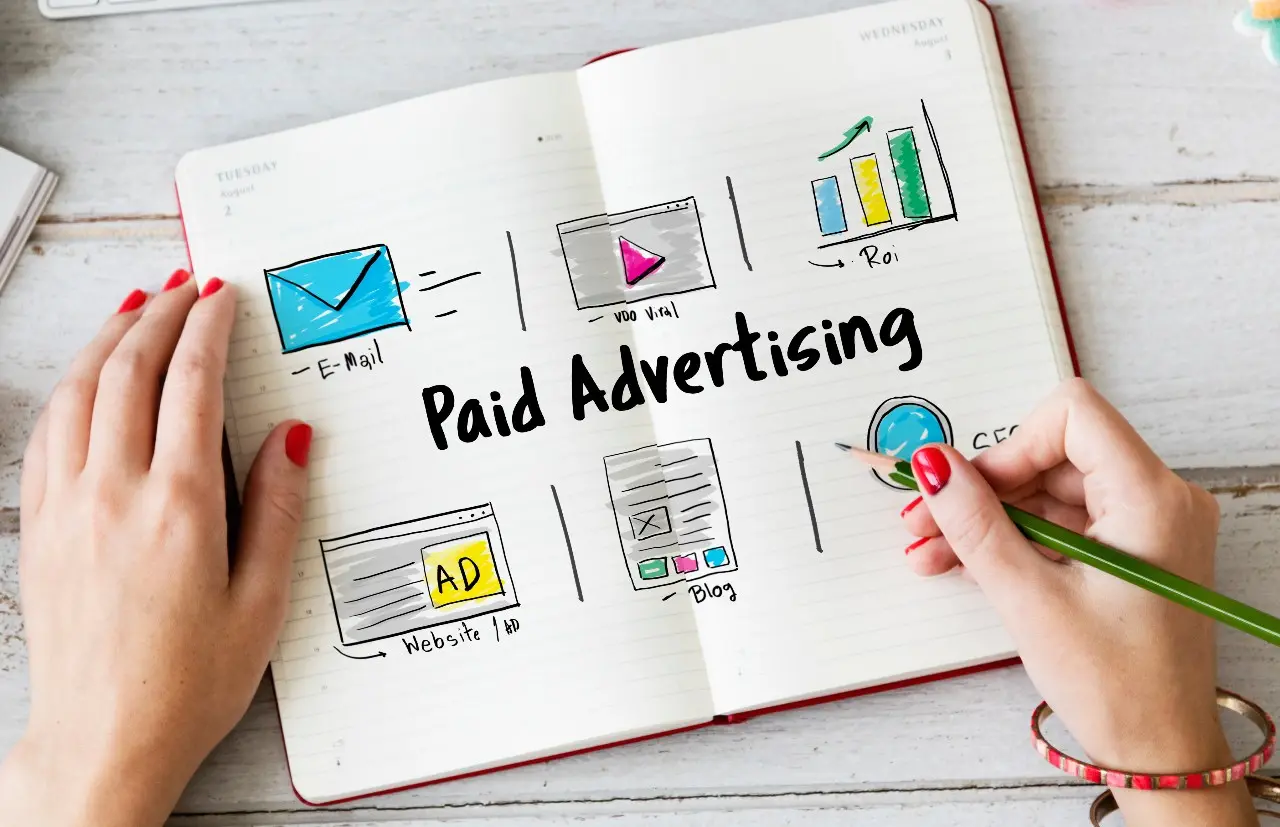Listen to article
In the complex world of B2B marketing, where should you place your bets? With an ever-increasing array of marketing channels vying for attention, it’s easy to get caught up chasing the “shiny new object.” But are marketers truly maximizing their ROI, or are they overinvesting in trendy channels at the expense of proven strategies?
Understanding the dynamics of ad spend across different platforms, scrutinizing channel effectiveness versus budget allocations, and knowing how to measure the ROI of marketing efforts are critical for B2B marketers.
This article explores the latest statistics surrounding advertising budget allocation, the ongoing debate of PPC vs. SEO, and the meteoric rise of mobile advertising, offering key insights to help you make informed decisions about where to invest your marketing dollars.
How B2B Marketers Are Strategically Allocating Their Budgets
In the fast-paced B2B space, budget allocation serves as a window into shifting priorities and emerging trends. By analyzing how companies distribute their marketing dollars, we gain a clearer understanding of what tactics are resonating and where marketers see the greatest growth potential. From investing in cutting-edge tools to doubling down on advertising, this breakdown of budget investments reveals where B2B marketers are placing their bets.
- B2B marketers allocate an average of 9.7% of their total budget to marketing efforts. Source
- B2B marketers dedicate 19% of their budget to advertising initiatives. Source
- Content creation receives 17% of the budget. Source
- Tools and technology account for 16% of budget allocation. Source
- Personnel investments make up 12% of the budget. Source
Takeaway: Balance Innovation with Impact
This budget breakdown highlights a clear focus on advertising and content creation as key drivers of audience engagement. However, marketers must ensure these areas yield measurable results rather than sinking funds into “shiny” initiatives without clear ROI. With just 16% of budgets allocated to tools and technology, the challenge lies in leveraging platforms that amplify efforts without overcomplicating workflows. For smaller teams where personnel accounts for only 12% of the spend, tools that automate and enhance efficiency can be game-changers.
Pro Tip:
Regularly audit your budget to identify areas where spend isn’t translating into meaningful outcomes. Cut back on underperforming channels and reinvest in tools or tactics that are directly tied to measurable growth, such as data-driven content strategies or programmatic advertising platforms. This way, you can stay competitive without overspending.
Rethinking Marketing Budgets: PPC’s Immediate Impact vs. SEO’s Long-Term Gains
Striking the right balance between PPC and SEO is a challenge many businesses face, yet overlooking long-term growth strategies can hinder sustainable success. While PPC delivers quick wins, investing in SEO builds a foundation that continues to drive organic traffic without the ongoing costs of paid ads. Failing to diversify your budget could mean sacrificing long-term visibility for short-term results.
- Small to medium-sized businesses typically allocate seven times more of their budget to PPC (Pay-Per-Click) advertising than to SEO (Search Engine Optimization). Source
- Paid search accounts for 39% of advertisers’ budgets. Source
By disproportionately allocating budgets toward PPC, businesses risk missing out on SEO’s unmatched compounding potential. While paid campaigns can offer immediate ROI, they require continual spending—stopping the campaigns means stopping the traffic. Conversely, SEO efforts, though slower to yield results, provide lasting benefits and higher cost-efficiency over time.
Pro Tip:
To future-proof your strategy, consider blending the best of both worlds. Use PPC for short-term gains while nurturing SEO efforts for the long haul. Track the performance of your organic efforts closely and reinvest a portion of PPC savings into SEO initiatives to keep building momentum. The key lies in viewing both tactics as complementary rather than competing.
Choosing the Right Marketing Channels: Why Balancing SEO and PPC Matters
In the ever-competitive digital landscape, the pressure to achieve quick wins can often lead marketers to over-invest in paid channels, sidelining the long-term benefits of SEO and other organic efforts. While PPC offers instant visibility, it’s the compounding effect of SEO that often drives sustainable growth, especially in industries like eCommerce and B2B where trust, relevance, and consistency are crucial. To remain competitive, marketers need to analyze channel performance not just by short-term outcomes but by the broader impact on customer acquisition and retention.
- Organic search accounts for 35% of worldwide eCommerce traffic, while paid search ads contribute only 4%. Source
- Google dominates paid search clicks, with nearly four times as many users likely to click on a Google ad (63%) compared to Amazon (15%), YouTube (9%), and Bing (6%). Source
- Paid media (PPC) generates twice the traffic of SEO. Source
- 23% of B2B marketers consider organic search the most effective revenue driver. Source
- 70% of B2B marketers report that SEO drives more sales than PPC. Source
- 45% of B2B marketers rank SEO and virtual events among the most effective lead generation channels. Source
- 96% of B2B marketers rate SEO as “very effective” or “somewhat effective.” Source
Marketers often fall into the trap of viewing PPC and SEO as competing strategies, but the two can complement each other beautifully when used strategically. While PPC is ideal for generating immediate traffic or promoting time-sensitive campaigns, SEO builds sustainable visibility, drives trust, and keeps acquisition costs low over time. By analyzing buyer personas and the customer journey, you can determine the right mix of short-term gains and long-term growth for your marketing strategy.
Don’t underestimate the power of testing. Regularly compare outcomes from different channels, fine-tuning your PPC bids and SEO keyword focus based on performance data. This iterative approach ensures you’re not just balancing your budget but also maximizing the effectiveness of every dollar spent on marketing.
Mobile Advertising: The Powerhouse for Future Growth
The dominance of mobile devices in our daily lives is reshaping how businesses approach advertising and sales. With people spending significant time on their smartphones, mobile advertising is no longer an add-on—it’s quickly becoming the core of digital marketing. The surge in app usage, short-form video content, and social media activity has further accelerated this trend, making mobile-first strategies a necessity rather than an option.
- Global spending on mobile advertising is projected to reach $402 billion in 2024, marking an 11% increase from 2023, fueled by the rising popularity of video-sharing platforms. Source
- U.S. mobile ad spending is expected to surpass $216 billion in 2024, an increase from $194.8 billion in 2023, showcasing an 11.1% growth. Source
- By 2028, mobile channels are anticipated to dominate the ad landscape, accounting for 70% of all ad spending. Source
- In 2023, mobile advertising spend reached an impressive $146 billion. Source
- Mobile advertising now makes up 19% of total marketing budgets for U.S. marketers. Source
- Mobile sales claim 55.25% of online transactions, overtaking desktop sales in dominance. Source
Takeaway: Adapt to a Mobile-Centric Marketplace
The momentum behind mobile advertising isn’t just a trend—it’s a reflection of how consumers engage with brands in an increasingly fast-paced, on-the-go world. With mobile sales surpassing desktop, the data confirms a pivotal shift in purchasing behavior that marketers can no longer ignore. To unlock the full potential of mobile, businesses must prioritize tactics like location-based targeting, in-app ads, and ad creatives designed specifically for small screens. For brands hesitant to invest, the numbers don’t lie: failing to meet customers where they already are—on their smartphones—means missing out on a thriving market.
To supercharge your mobile advertising strategy, leverage AI-driven analytics for audience segmentation and personalization. Tools like Adjust, MoEngage, or Branch.io can provide insights to tailor dynamic ad content and optimize conversions across mobile-first platforms. Additionally, businesses looking to refine their overall digital approach can benefit from exploring digital marketing strategies for small businesses, ensuring a cohesive and impactful online presence.
Cracking the ROI Code: Why Measurement Matters
In a crowded digital landscape, marketing budgets are under constant scrutiny, and the ability to justify spending has never been more critical. Yet, many marketers still struggle to connect their efforts to tangible business outcomes. ROI measurement is no longer a “nice-to-have” but a business imperative—one that distinguishes data-savvy marketers from those left guessing. Let’s take a closer look at the numbers behind this challenge:
- A staggering 47% of marketers do not track the ROI of their content marketing efforts, leaving significant gaps in their strategies. Source
- On the flip side, 55% of successful B2B content marketers actively measure ROI, reflecting a clear correlation between tracking performance and achieving better outcomes. Source
- However, 71% of marketing executives find it difficult to attribute social and content marketing efforts to revenue, highlighting ongoing obstacles in proving ROI. Source
- Just 25% of B2B marketers can show how their content marketing reduces customer acquisition costs, underscoring a missed opportunity to demonstrate cost efficiency. Source
- Encouragingly, 26% of marketers report that leveraging robust data analysis improves their overall ROI, showing data-backed strategies can drive better outcomes. Source
Takeaway: ROI Measurement Is the Key to Smarter Marketing Investments
The data makes one thing crystal clear: marketers who fail to measure ROI are not just leaving insights on the table—they’re leaving money there too. With attribution remaining a top challenge, it’s vital to invest in tools and methodologies that connect marketing activity to revenue. Those who leverage data to tell a compelling ROI story will not only secure the trust of stakeholders but also gain a competitive edge by doubling down on what works.
Pro Tip:
To start closing the attribution gap, integrate marketing analytics platforms like HubSpot, Google Analytics 4, or Tableau into your strategy. These tools can help identify which channels and campaigns deliver the highest ROI, enabling you to strategically allocate resources and amplify impact. For companies struggling with resource allocation or specialized expertise, exploring outsourcing SEO services can provide a cost-effective way to ensure all channels are optimized for measurable returns.
Conclusion
The statistics outlined above reveal a critical truth: efficient budget allocation and strategic channel selection are key drivers of long-term marketing success. While the allure of quick wins from PPC or the dominance of mobile advertising may seem tempting, the data underscores the unmatched value of SEO, content marketing, and organic search in building sustainable growth. Balancing immediate conversions with long-term visibility is not just a best practice—it’s a necessity in today’s competitive landscape.
As marketers, it’s vital to continuously evaluate whether your budget is working as hard as it can. Are you prioritizing channels that align with your audience’s behaviors and expectations? Are you leveraging data to measure ROI and optimize performance? A thoughtful approach to channel effectiveness vs budget allocation can unlock untapped potential and drive meaningful results.
Ready to boost your traffic and grow your website? Your customers are looking for you, and our SEO services can help you be found across search engines. Let’s build a strategy that works today and sets you up for success tomorrow.
About Creating Channel Effectiveness vs Budget: Are You Overspending?
This guide was written by the Scopic Studios team and reviewed by Araksya Hakobjanyan, SEO Lead at Scopic Studios.
Scopic Studios delivers exceptional and engaging content rooted in our expertise across marketing and creative services. Our team of talented writers and digital experts excel in transforming intricate concepts into captivating narratives tailored for diverse industries. We’re passionate about crafting content that not only resonates but also drives value across all digital platforms.
Note: This blog’s images are sourced from Freepik.














































































































































































































































